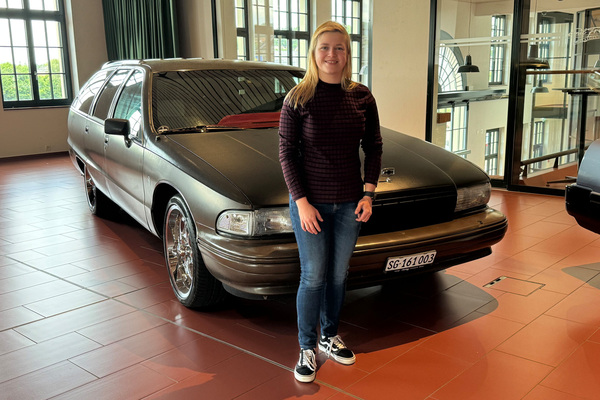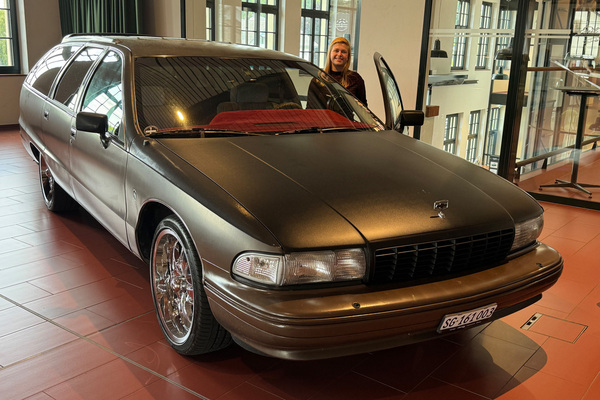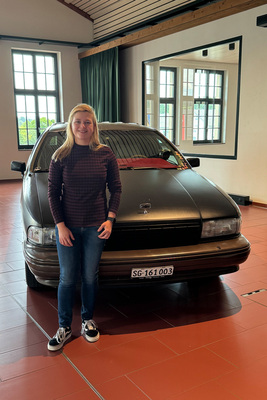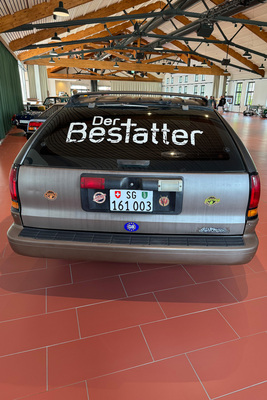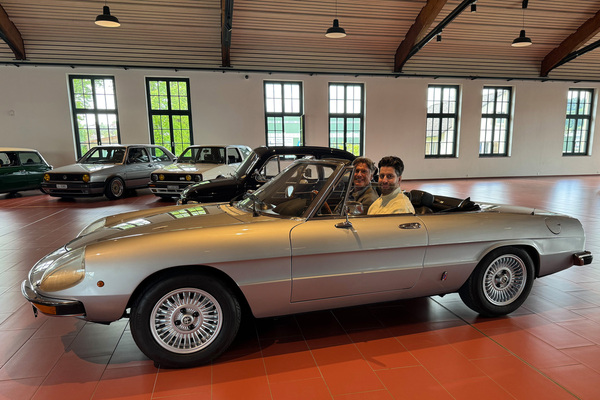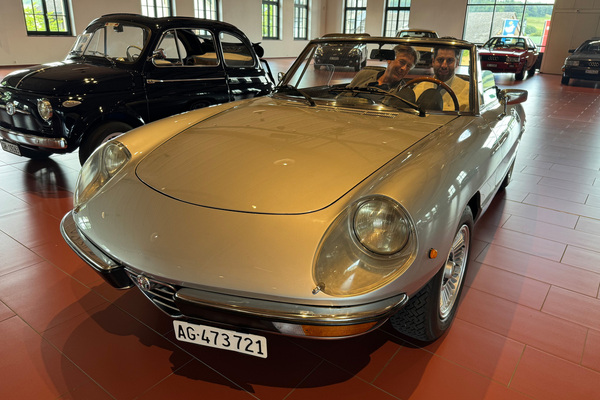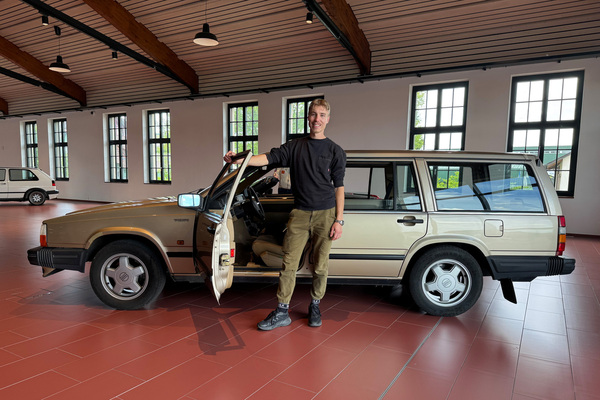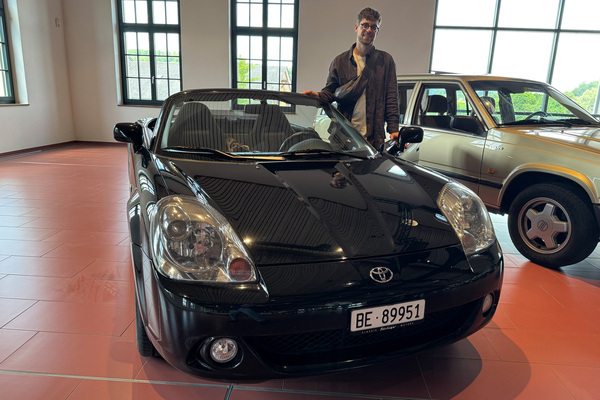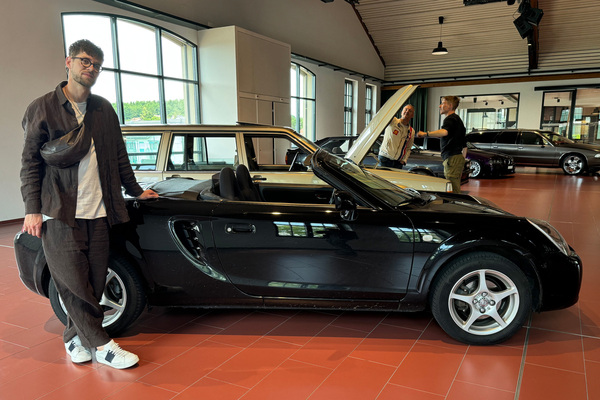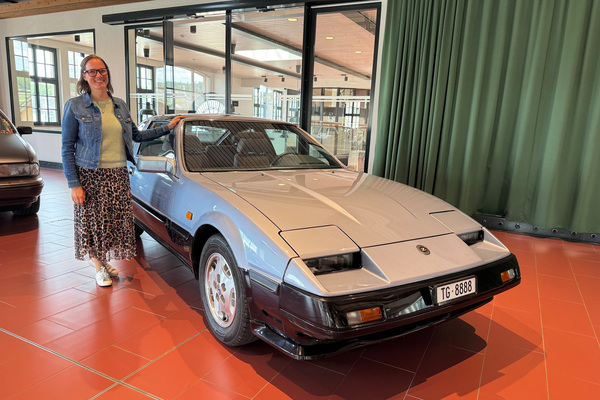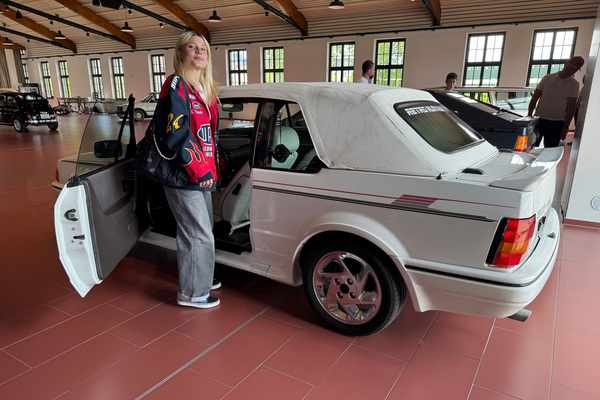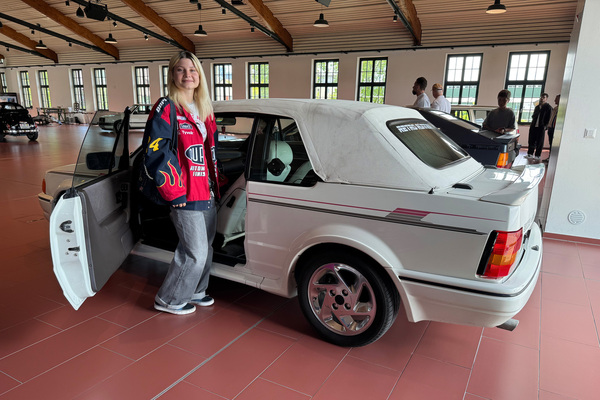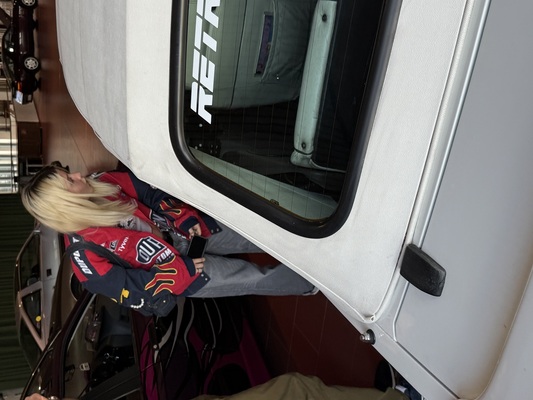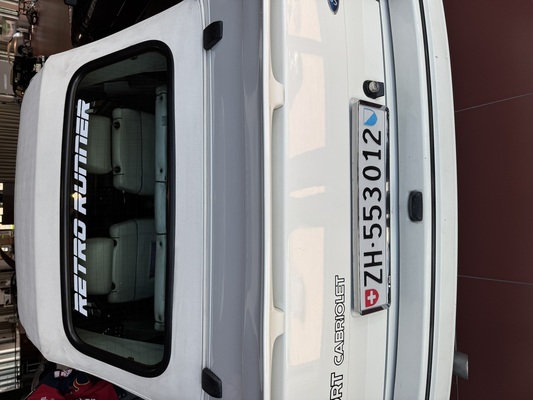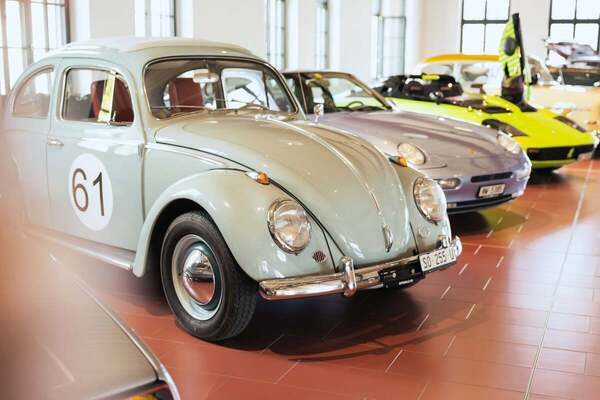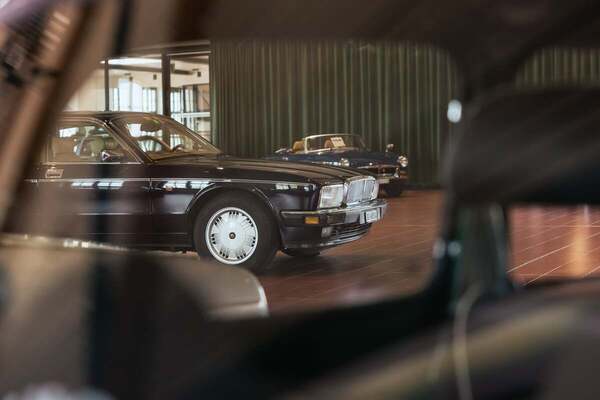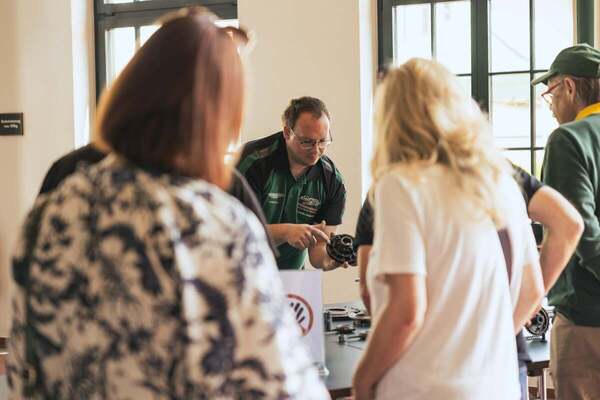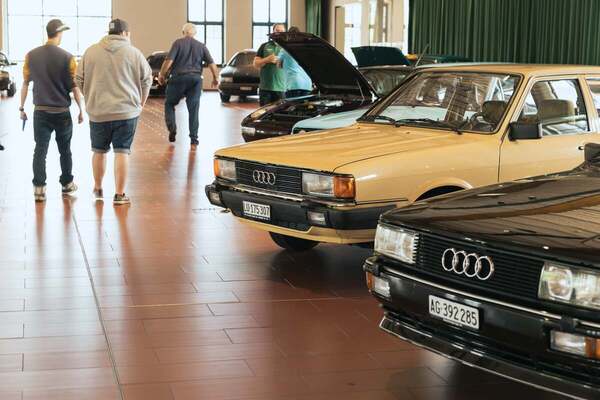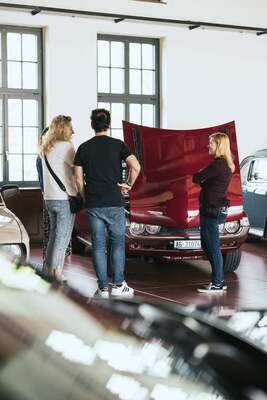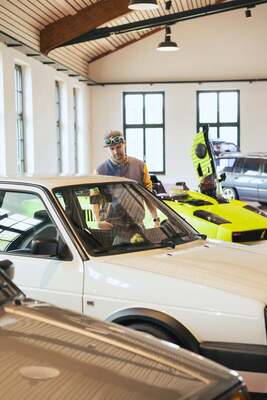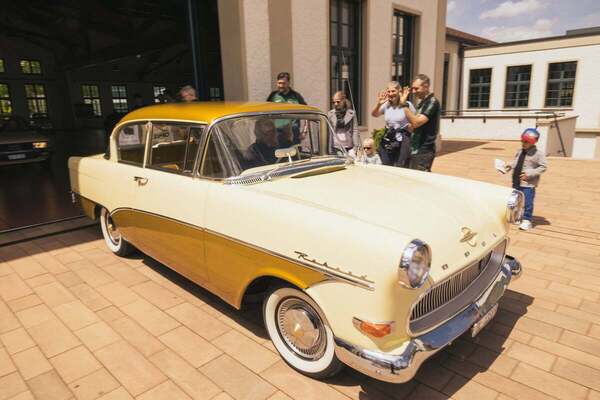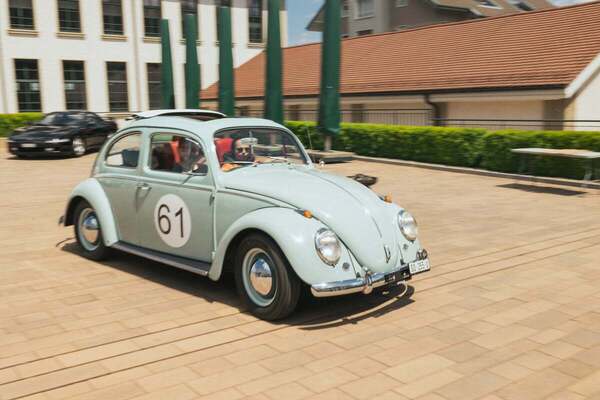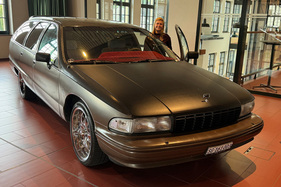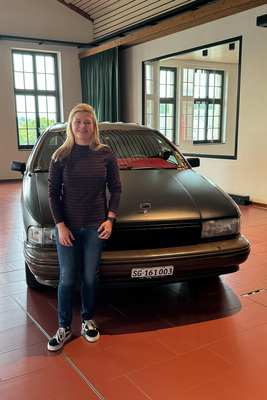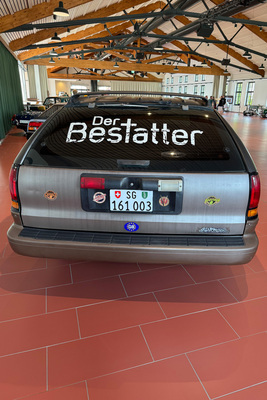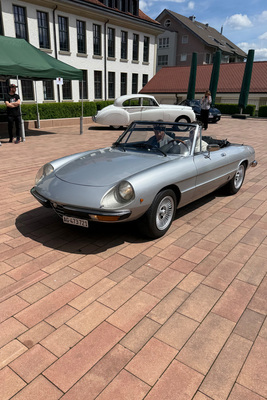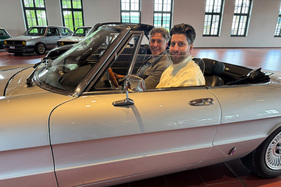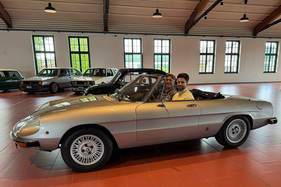Emil-Frey-Classics AG in Safenwil played host twice at the weekend to Swiss car enthusiasts of different generations. Even before the vernissage of the new and very successful exhibition on the subject of "100 years of the automobile in Graubünden" (Zwischengas reports separately), a relaxed "Grill & Chill" meeting was held for the second time on Saturday with "Meet Emil" specifically for younger classic car and youngtimer owners - and they came too, even if they were not alone.

What was initially striking was the wide range of vehicles - from elite (Bentley 6.5 liter) and high-quality (various Porsches or Jaguars) to exotic (Isdera Spyder) and affordable entry-level classics such as a 1990 Ford Escort convertible, a Nissan 300 ZX or a Volvo 740 Turbo. This mix alone signals to experienced visitors to classic car meetings that, in addition to twens and "thirty-somethings", "silver curls" (who feel sufficiently young) were also addressed and invited, as were white-haired drivers of youngtimers. In this case, the car should at least provide sufficient legitimization to "meet Emil" - as a synonym for the thoroughly commendable exchange between young and old.
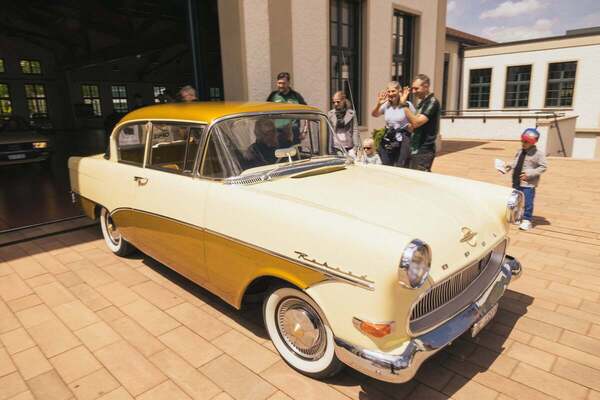
Visitors were given permission to drive their classic car into the large and weather-protected event hall of the Classic Car Center, not without being able to stroll past dozens of curious onlookers enjoying the sunshine outside with soft drinks and barbecue food and present their automotive pride and joy as if on a stage.
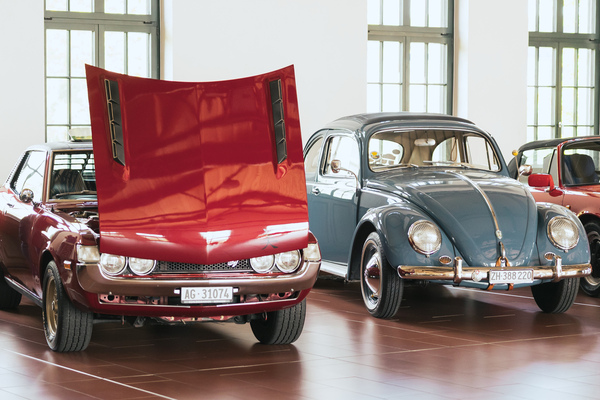
In the morning, Ludovica de Grandi and her partner Giovanni rolled into the hall in a 1958 Capri blue folding-roof Beetle. She was probably the youngest visitor to enter the classic car scene: at just eleven years old and inspired by the famous "Herbie" film series, she acquired the early Beetle model in "used condition" with the help of her parents. Shortly afterwards, she began to improve it over the years after school and eventually drove it as her first car. Today, 20 years later, Ludovica drives her "Francisco" to meetings all over Switzerland almost every weekend.

The engine of the Beetle is unlikely to make Estella - just 21 years young - as happy as the V8 of her 1992 Chevrolet Caprice, a present from her father and somewhere between US car, movie car look ("The Undertaker" sticker) and tuning scene. She loves the car, which is huge compared to her compact size, and the reactions it generates when she is perceived as the driver of the little spaceship - because "you hardly ever see me behind the wheel."
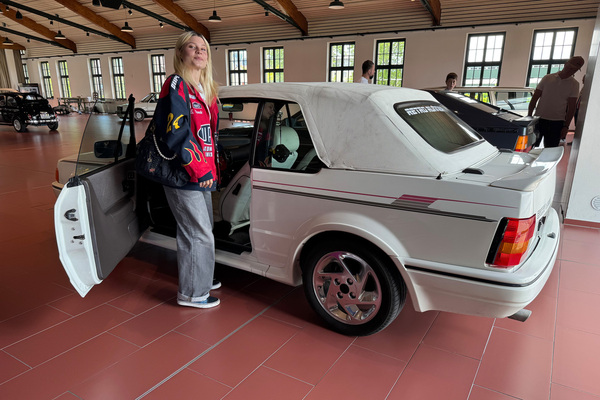
Her friend Michelle (20), on the other hand, is passionate about her 1990 Ford Escort, which she discovered by chance, simply loved and bought on the spur of the moment - and is now happy to seek advice on major and minor improvements to the vehicle as a "rolling" restoration by herself. You wouldn't think you could find that much passion for cars at a young age today, but it still exists:
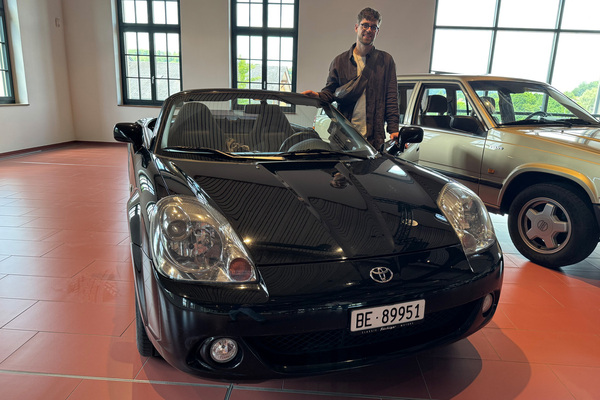
Sam, 27 years young, also bought his Toyota MR2 (2004) for 10,000 francs on the internet while still a student teacher. He doesn't like wrenching himself, but one thing is certain for him: "Why should I buy a new car when I find old cars not only nicer, but also better to drive - without annoying bells and whistles; without screens that nobody needs; with a focus solely on what is important in a car: having fun driving it! I can't imagine ever buying a new car; and I also think it's more sustainable in terms of how we use resources."

His colleague Cyril, on the other hand, loves his angular and indestructible Volvo 740 Turbo with automatic transmission, which he also bought online and in very good condition for CHF 8,500. For him, the car is what all manufacturers want in their marketing departments, namely part of his "Lify style". The car is so spacious that he often spends the night in it on the road. When asked if he is not afraid of being in the middle of the forest all alone, he replies confidently: "Why, it's a Volvo" - as if the car is equipped with something like bulletproof glass.
For this alone, Volvo should invite the likeable youngster directly to China - on a "values" roadshow to promote sales. Such stories and experiences shape relationships with the car and an image, not overrated "connectivity" modules whose benefits can be substituted by any 30-euro part from the accessories and used in any old car.
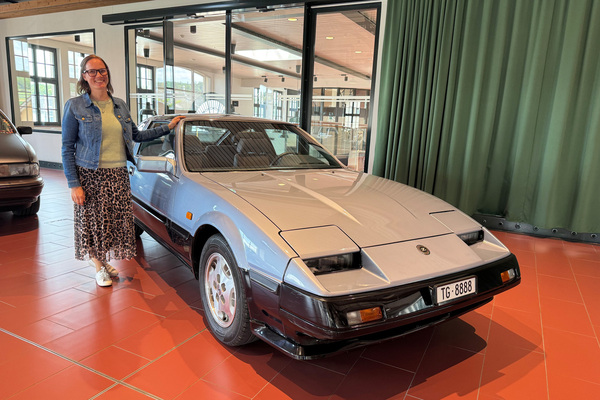
Janina is no longer quite so young, albeit younger than her 1984 Nissan 300 ZX. The car previously belonged to a very satisfied former customer of her garage family - and she has grown very fond of it. Her passion for old cars originated somewhere else entirely: "I was shockingly in love with a 1961 Simca Aronde, which was the first classic car I came across as a child and somehow managed to really touch me," she explains her path to old cars.

The host, Emil Frey Classics AG, is generally quite committed to introducing younger drivers to the subject of classic cars or providing the best possible support for those who already enjoy them or own a vehicle. The event also featured numerous employees as experts in mechanics, electrics or plumbing work, all of whom were on hand to provide advice or small teaching units. At the same time, the company is actively analyzing the motives and expectations of younger people with the aim of expanding Emil Frey Classics AG's previously predominantly male and older clientele.

According to a recent survey conducted by the Classic Center Switzerland, the young target group values three factors above all in old vehicles: Nostalgia, emotional attachment and individuality. Younger people see classic cars less as a status symbol and more as an expression of personality; they are also a vehicle for a sense of community. The social aspect of the hobby, e.g. through events and community-building, is at the forefront. Exclusivity, on the other hand, is far less important than for the older generation. Marketing Manager Manuela Mondelli sums it up as follows: "The aspects of self-fulfilment, social relationships, belonging and shared experiences are particularly important to younger classic car fans."
Fortunately, this sounds somewhat familiar, as the motives of the younger and older generations are not that far apart. Perhaps the same key event that has always been the most important is decisive for whether the spark is transferred from "the old" to "the young": the driving experience itself.
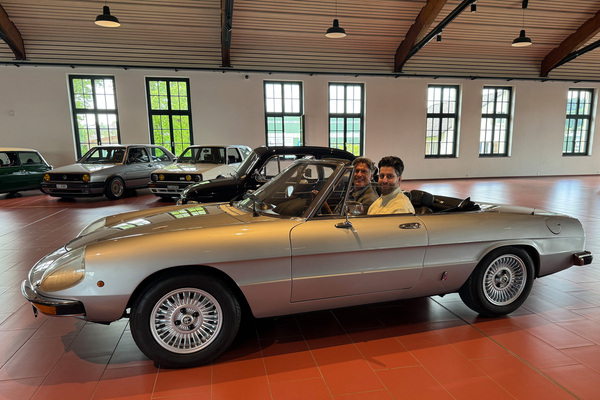
Once you have taken the wheel of your dream car, perhaps your father's or uncle's car or maybe a nice-sounding sports car, you will never want to miss it again and will want to drive it for as long as you can. Just like Yannick Hillbert on Saturday, who drove his Alfa Romeo Spider 2000 Fastback (1978) into the hall with a flourish. Incidentally, Richard - his father and former owner of the Alfa - was also there, but only as a passenger.
Conclusion: Nobody should complain that the number of newcomers is threatening to dwindle if they don't want to motivate people to drive themselves or don't want to let anyone take the wheel of their classic car. The scene needs this - and events like this - to survive. Chapeau to all those who want to be part of it.

